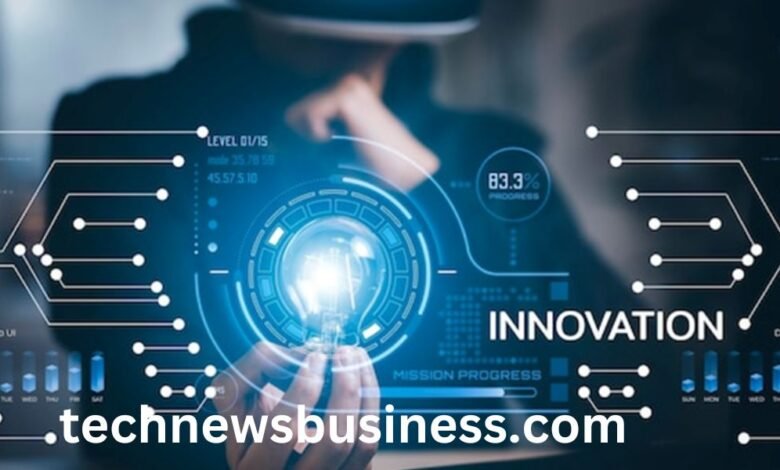Top Tech Trends: Navigating the Pinnacle of Technological Innovation

The future with our comprehensive guide to the top tech trends of the year. From artificial intelligence to blockchain, virtual reality to quantum computing, this article covers it all. As technology continues to evolve at an unprecedented rate, it’s essential to stay up-to-date with the latest breakthroughs and innovations. Whether you’re a tech enthusiast, a professional in the industry, or simply curious about the future, this article will provide you with valuable insights and trends shaping the technological landscape.
The Impact of Technology on Various Industries
Technology has become an integral part of our lives and has revolutionized various industries. From healthcare to finance, retail to manufacturing, technology has disrupted traditional processes and paved the way for new opportunities. In healthcare, for example, advancements in telemedicine and wearable devices have transformed the way patients receive care and monitor their health. Similarly, the finance industry has embraced fintech solutions, enabling seamless transactions and personalized financial services.
But it’s not just these industries that have been impacted by technology. Education has also seen a significant transformation with the integration of e-learning platforms, interactive digital textbooks, and AI-powered personalized learning. The entertainment industry has been revolutionized by streaming services, virtual reality, and augmented reality experiences. Even agriculture has benefited from technology, with precision farming techniques and IoT-enabled sensors improving crop yields and reducing environmental impact.
Technology has proven to be a game-changer across industries, and businesses that embrace these advancements are poised to thrive in the digital age.
Artificial Intelligence (AI) and Machine Learning
Artificial intelligence and machine learning have been at the forefront of technological advancements in recent years. AI refers to the development of computer systems that can perform tasks that typically require human intelligence. Machine learning, on the other hand, is a subset of AI that focuses on enabling computers to learn and improve from experience.
AI and machine learning have numerous practical applications across industries. In healthcare, AI-powered systems can analyze medical data to assist in the diagnosis of diseases and recommend personalized treatment plans. In the retail sector, machine learning algorithms can predict customer preferences and provide personalized product recommendations. Autonomous vehicles, powered by AI, are set to transform transportation by improving safety and reducing traffic congestion.
The potential of AI and machine learning is vast, and as the technology continues to advance, we can expect to see even more innovative applications in the future.
Internet of Things (IoT) and Connected Devices
The Internet of Things (IoT) refers to a network of interconnected devices that can communicate with each other and exchange data. From smartphones and wearables to smart home devices and industrial sensors, IoT has become increasingly prevalent in our daily lives.
IoT has the potential to revolutionize various industries by enabling real-time data collection and analysis. In manufacturing, IoT sensors can monitor equipment performance, detect anomalies, and optimize production processes. In agriculture, IoT devices can monitor soil moisture levels, weather conditions, and crop health, enabling farmers to make data-driven decisions and increase efficiency.
Connected devices have also transformed the way we interact with our homes. Smart thermostats, lighting systems, and security cameras can be controlled remotely, providing convenience, energy savings, and improved home security.
As IoT continues to evolve, it will create new opportunities for businesses to streamline operations, enhance customer experiences, and drive innovation.
Big Data and Analytics
The proliferation of digital technologies has resulted in an explosion of data. Big data refers to the large volumes of structured and unstructured data that are generated by various sources, including social media, sensors, and transactional systems. Analyzing this data can provide valuable insights and help businesses make informed decisions.
Big data analytics involves extracting meaningful patterns, trends, and correlations from vast amounts of data. By leveraging advanced analytics techniques, businesses can gain a deeper understanding of customer behavior, optimize supply chains, and improve operational efficiency.
In healthcare, big data analytics can be used to identify disease trends, predict patient outcomes, and develop targeted treatments. In marketing, analyzing customer data can help businesses personalize their marketing strategies and improve customer engagement.
The power of big data lies in its ability to uncover hidden insights, drive innovation, and create a competitive advantage.
Virtual Reality (VR) and Augmented Reality (AR)
Virtual reality (VR) and augmented reality (AR) have transformed the way we experience digital content and interact with the world around us. VR immerses users in a simulated environment, while AR overlays digital content onto the real world.
The entertainment industry has embraced VR and AR, offering immersive gaming experiences and interactive storytelling. In the retail sector, AR is being used to enhance the shopping experience by allowing customers to try on virtual clothes or visualize furniture in their homes. In healthcare, VR is used for pain management, therapy, and surgical training.
As the technology becomes more accessible and affordable, we can expect to see VR and AR revolutionize various industries, from education and training to tourism and real estate.
Cybersecurity and Data Privacy
With the increasing reliance on technology, cybersecurity and data privacy have become major concerns. Cyberattacks and data breaches can have severe consequences for businesses and individuals alike, resulting in financial losses, reputation damage, and the compromise of sensitive information.
Businesses must invest in robust cybersecurity measures to protect their systems and data. This includes implementing firewalls, encryption, and intrusion detection systems. Additionally, organizations must educate employees about cybersecurity best practices and establish protocols for incident response.
Individuals also play a crucial role in safeguarding their data and privacy. This includes using strong passwords, enabling two-factor authentication, and being cautious about sharing personal information online.
As technology continues to advance, the need for strong cybersecurity measures and data privacy regulations will only become more critical.
Blockchain Technology
Blockchain technology has gained significant attention in recent years, primarily due to its association with cryptocurrencies such as Bitcoin. However, blockchain has far-reaching implications beyond digital currencies.
At its core, blockchain is a decentralized and transparent ledger that records transactions across multiple computers. This technology has the potential to disrupt various industries, including finance, supply chain management, and healthcare.
In finance, blockchain can streamline cross-border transactions, reduce costs, and increase transparency. In supply chain management, blockchain can provide an immutable record of product provenance, ensuring authenticity and reducing the risk of counterfeits. In healthcare, blockchain can enable secure and interoperable sharing of patient data, improving care coordination and patient outcomes.
As organizations explore the potential of blockchain, we can expect to see innovative applications that transform industries and improve trust in digital transactions.
Automation and Robotics
Automation and robotics have the potential to revolutionize the way we work and live. From self-driving cars and delivery drones to robotic process automation (RPA) in business operations, automation is reshaping various industries.
In manufacturing, robots can perform repetitive tasks with precision and efficiency, improving productivity and reducing costs. In healthcare, robotic surgery systems enable minimally invasive procedures and enhance surgical precision. In customer service, chatbots and virtual assistants are becoming increasingly prevalent, providing instant support and personalized experiences.
While automation offers numerous benefits, there are also concerns about job displacement and ethical implications. It is crucial for businesses and policymakers to navigate these challenges and ensure a smooth transition to an automated future.
Conclusion: Embracing the Future of Technology
As technology continues to advance at an unprecedented rate, it’s essential for businesses and individuals to embrace the future of technology. The top tech trends discussed in this article are shaping the technological landscape and creating new opportunities for innovation and growth.
From artificial intelligence and machine learning to blockchain and automation, these trends have the potential to transform industries, enhance customer experiences, and improve operational efficiency. Whether you’re a business owner, a professional in the industry, or simply curious about the future, staying informed and adapting to these technological advancements is key to thriving in the digital age.
So, buckle up and get ready to navigate the pinnacle of technological innovation. The future is here, and it’s time to embrace it.




